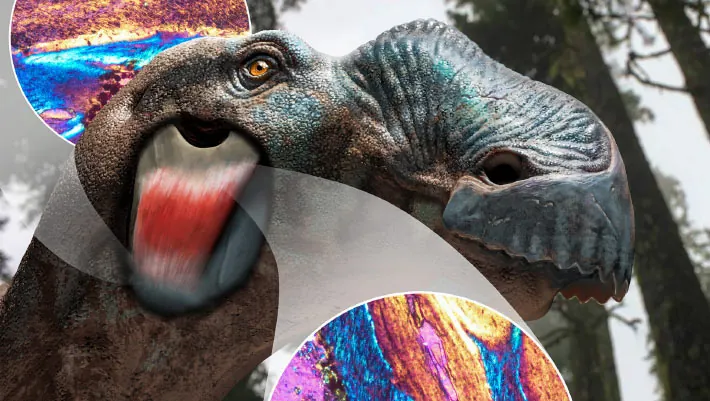
Paleontologists Unveil Surprising Soft Tissue Structure That Could Change Our Understanding of Dinosaur Anatomy
2025-06-02
Author: Wei
A Revolutionary Discovery in Dinosaur Anatomy
Paleontologists have made a groundbreaking discovery: a previously unknown soft tissue structure in the cheek regions of various dinosaur species, dubbed the 'exoparia.' This remarkable finding not only reshapes our understanding of dinosaur anatomy but also reveals the shortcomings of traditional methods used to reconstruct parts of these ancient creatures that rarely leave fossil evidence.
Unlocking the Secrets of Dinosaur Muscles
"Because muscles and tissues degrade over time, soft anatomy from dinosaurs is exceptionally rare," explains Henry Sharpe, a paleontologist at the University of Alberta. Until recently, paleontology relied heavily on bones to piece together skeletons, leaving a significant gap in knowledge regarding what muscles and tissues might have existed in these majestic animals.
The situation changed in the 1990s with the introduction of the Extant Phylogenetic Bracket method, which uses living relatives of dinosaurs—like crocodiles and birds—to infer the presence of certain soft tissues. However, this method has its limitations. What if dinosaurs had distinct muscles not present in their modern counterparts?
The Mysterious Skull of Gary the Edmontosaurus
This question haunted Sharpe while studying an Edmontosaurus skull named Gary. He noticed an unusual flanged structure near the cheek that piqued his curiosity. "When I looked into it, I found no clear answers," he recalls. Typically, one would assume such structures indicate cheek muscles, but reptiles do not possess them.
This led Sharpe and his colleagues at various institutions, including the University of Toronto and the Royal Ontario Museum, to investigate further. Their examinations across multiple dinosaur species revealed that this structure consistently appeared in the same location, suggesting it had to be a muscle or ligament.
A Peek Beneath the Surface
Using advanced techniques, the researchers analyzed thin slices of the dinosaur bones. "Soft tissues like muscles or ligaments are attached to bones via collagen fibers," says Sharpe. Even after the soft tissues decay, remnants of these fibers remain, allowing scientists to study them using polarized light.
Employing a method called THLEEP, they examined the three-dimensional orientation of the collagen fibers in the cheekbone and lower jaw. Every dinosaur species showed a connection between the cheek and jaw, supporting the hypothesis that this structure functioned similarly to a cheek muscle or ligament.
Implications of the Discovery
Interestingly, there was variability in size and attachment angle among different species, hinting at specialized functions. While the exact purpose remains unclear, it's evident that this newfound structure played a crucial role in how these dinosaurs consumed food. "This discovery emphasizes why it’s essential to expand our comparisons of dinosaur fossils beyond modern analogs to truly understand these extinct species," Sharpe adds.
As new research continues to unravel the mysteries of dinosaur anatomy, this finding, published in the *Journal of Anatomy*, opens the door to exploring the incredible diversity of life that once roamed the Earth.




 Brasil (PT)
Brasil (PT)
 Canada (EN)
Canada (EN)
 Chile (ES)
Chile (ES)
 Česko (CS)
Česko (CS)
 대한민국 (KO)
대한민국 (KO)
 España (ES)
España (ES)
 France (FR)
France (FR)
 Hong Kong (EN)
Hong Kong (EN)
 Italia (IT)
Italia (IT)
 日本 (JA)
日本 (JA)
 Magyarország (HU)
Magyarország (HU)
 Norge (NO)
Norge (NO)
 Polska (PL)
Polska (PL)
 Schweiz (DE)
Schweiz (DE)
 Singapore (EN)
Singapore (EN)
 Sverige (SV)
Sverige (SV)
 Suomi (FI)
Suomi (FI)
 Türkiye (TR)
Türkiye (TR)
 الإمارات العربية المتحدة (AR)
الإمارات العربية المتحدة (AR)